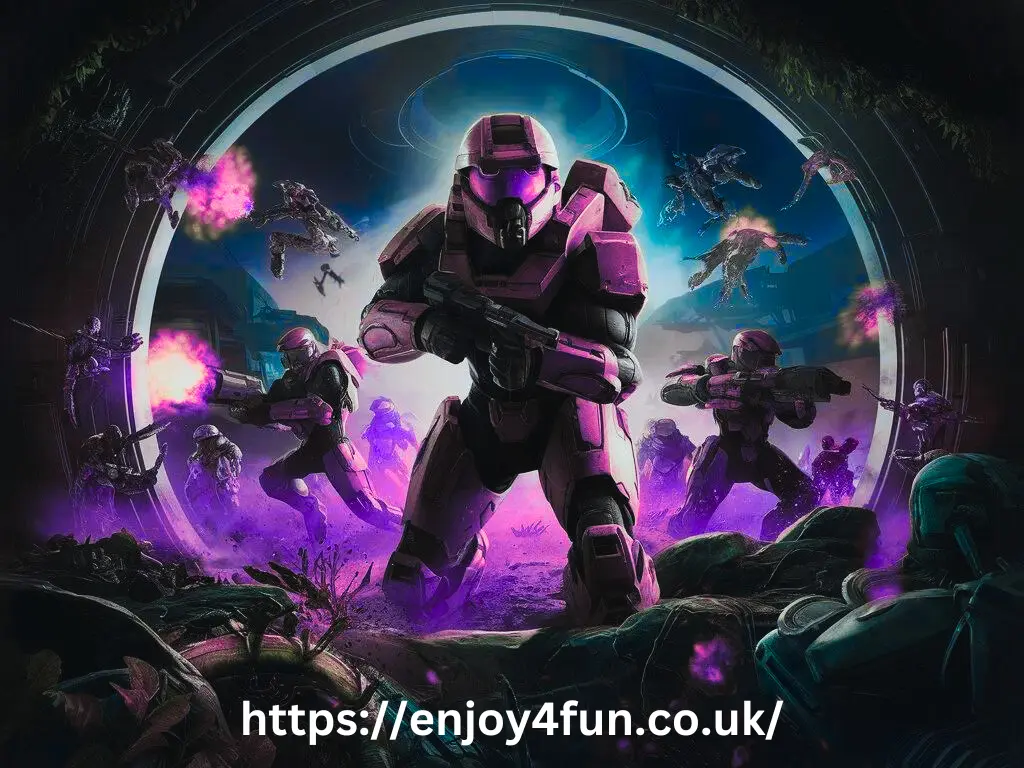The release of “halo (2003) game icons banners Combat Evolved” in 2001 revolutionized the gaming industry, introducing a rich narrative, immersive gameplay, and a universe that would spawn a massive franchise. However, 2003 was pivotal for the Halo series, marking the expansion of its iconic imagery through various mediums, including game icons and banners. These visual elements have become synonymous with the Halo brand, representing a game and a cultural phenomenon. This article will explore the significance of halo (2003) game icons banners, their evolution, and their lasting impact on the gaming community.
The Birth of halo (2003) game icons banners
Icons are more than just small images on a desktop or a game menu; they are the gateway to a player’s experience. In 2003, as the popularity of Halo grew, so did the need for instantly recognizable symbols that could encapsulate the game’s essence. The Halo icons introduced during this period were designed to be simple yet powerful, reflecting the game’s core elements.
The most iconic of these is the Master Chief’s helmet. This image quickly became a universal symbol for the game, representing the mysterious and resilient protagonist. The helmet icon was designed with sleek lines and a minimalist approach, emphasizing the visor’s reflective gold against the green armor. This simplicity allowed the icon to be easily recognized even in small sizes, making it perfect for desktops, websites, and promotional materials.
Another significant icon from this period is the Halo ring itself. The ring icon, often depicted with a subtle glow, represents the mysterious and powerful weapon central to the game’s plot. The icon’s circular shape and ethereal glow captured players’ imaginations, symbolizing the game’s blend of science fiction and ancient mystery.
Banners Expanding the Halo Universe
While icons serve as quick identifiers, banners are larger, more detailed images that convey a broader sense of the game’s universe. In 2003, as Halo’s presence expanded across various platforms and media, banners became essential for marketing and community engagement.
The banners from this era often featured dynamic scenes from the game, showcasing epic battles, vast landscapes, and key characters. One of the most memorable banners from 2003 depicts Master Chief standing on a war-torn battlefield, with the Halo ring looming ominously in the background. This image not only highlighted the game’s scale but also conveyed the intensity and stakes of the story.
Banners were also used to promote multiplayer events and expansions. For example, the 2003 release of the Halo Custom Edition featured banners that emphasized the game’s customizable maps and modes, drawing attention to its community-driven aspects. These banners often featured action-packed scenes with multiple Spartans in combat, highlighting the competitive nature of Halo’s multiplayer experience.
The Evolution of Halo Icons and Banners
As the Halo franchise grew, so did the complexity and variety of its icons and banners. The early designs from 2003 laid the foundation for future iterations, but over time, these visual elements evolved to reflect changes in technology, art style, and the expanding Halo universe.
One of the most significant changes in icon design came with the release of “Halo 2.” The enhanced graphics and detailed character models allowed for more intricate icon designs. However, the core elements—Master Chief’s helmet, the Halo ring, and the UNSC logo—remained central to the iconography, maintaining consistency across the series.
Banners, too, became more elaborate, incorporating new characters, vehicles, and settings introduced in subsequent games—the transition from 2D to 3D design tools allowed artists to create more dynamic and visually striking banners. Lighting, perspective, and motion blur gave these banners a cinematic quality, drawing players deeper into the Halo universe.
The evolution of these visual elements also extended to digital platforms. With the rise of social media and online gaming communities, Halo icons and banners were adapted for use on websites, forums, and social profiles. These adaptations ensured that the Halo brand remained instantly recognizable, regardless of the platform.
The Impact of Halo Icons and Banners on Gaming Culture
The influence of halo (2003) game icons banners extends beyond the game itself, leaving a lasting impact on gaming culture. These visual elements have become part of gamers’ collective memory, representing not just a game but an entire era of gaming history.
For many players, the sight of the Master Chief helmet icon or a Halo banner evokes a sense of nostalgia, reminding them of the countless hours spent exploring the game’s universe, battling in multiplayer arenas, or theorizing about the mysteries of the Halo ring. These icons and banners symbolize community and shared experience, uniting players across different backgrounds and regions.
The design principles established by Halo’s icons and banners have also influenced other games and franchises. The emphasis on simplicity, recognizability, and thematic consistency has become a standard in game design, inspiring developers to create their iconic symbols.
Collecting and Preserving halo (2003) game icons banners
Recent interest in retro gaming and digital preservation has led to a resurgence in appreciating halo (2003) game icons banners. Collectors and fans have sought original files, high-resolution images, and rare promotional materials from this era, preserving them for future generations.
Websites and online communities dedicated to Halo often feature galleries of icons and banners, allowing fans to revisit these iconic images and share their memories. Preserving these visual elements is not just about nostalgia; it is about recognizing these designs’ artistry and cultural significance.
Some fans have even gone further, creating custom icons and banners inspired by the 2003 designs. These fan creations celebrate Halo’s legacy while also bringing a fresh perspective to the familiar imagery.
Conclusion The Legacy of Halo (2003) Game Icons and Banners
The halo (2003) game icons banners are more than just marketing tools; they are an integral part of the Halo experience. These visual elements have helped define the franchise’s identity, creating a visual language that resonates with players around the world.
As the Halo series continues to evolve, the icons and banners from 2003 remain a testament to the game’s impact on the industry and its enduring legacy. Whether you are a longtime fan or a newcomer to the series, the sight of these iconic images serves as a reminder of the game that changed everything.
In a world where gaming franchises come and go, the lasting appeal of halo (2003) game icons banners is a testament to the power of great design and players’ deep connection with the Halo universe. As we look to the future, these symbols will continue to inspire and unite players, ensuring that the legacy of Halo endures for generations to come.






